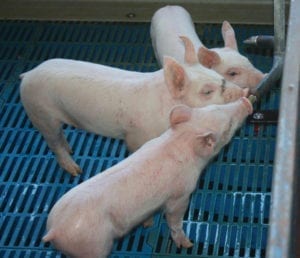 The swine industry recognizes that water requirement intake and flow rate are crucial to pig performance and farm management. Still, water evaluation is frequently based on subjective monitoring of physical properties like smell, color, temperature, and taste. However, water quality also includes chemical and microbiological characteristics that must be considered and assessed.
The swine industry recognizes that water requirement intake and flow rate are crucial to pig performance and farm management. Still, water evaluation is frequently based on subjective monitoring of physical properties like smell, color, temperature, and taste. However, water quality also includes chemical and microbiological characteristics that must be considered and assessed.
Mineral composition, conductivity, and pH are included in the chemical category. Total dissolved solids (TDS) is a general evaluation for mineral composition and concentration. High concentrations of TDS (>5000mg/L) can lead to adverse effects in growth rate and feed conversion in pigs. Much like TDS, pH provides important quality information, considering that chlorination is impaired in alkaline solutions (pH>8.5) and medications could precipitate in acidic (pH<6.5) water.
The most common specific chemical tests are hardness, sulfates, nitrates and nitrites, iron, and manganese. When in high concentration, these elements may cause equipment problems due to the accumulation of scale in water, osmotic diarrhea, or have a negative effect on growth rate. Mineral excess can decrease palatability leading to reduced consumption.
A routine microbiological evaluation measures the number of coliforms per milliliter of water; the maximum level of coliforms accepted 50 CFU/mL. Depending on which organism is present in water, especially in surface water, their presence is enough to cause diseases and affect performance. For this reason, monitoring programs must include the evaluation of e. coli, salmonella, cryptosporidium, enteroviruses, among other pathogenic organisms in the water.
Water quality is much more than a visual evaluation. Chemical and microbiological analysis is recommended once or twice a year. Producers need to keep water lines and equipment cleaned and properly working. Great water quality means wellbeing, care, and growth performance for all pigs.
Subscribe to our blog!
